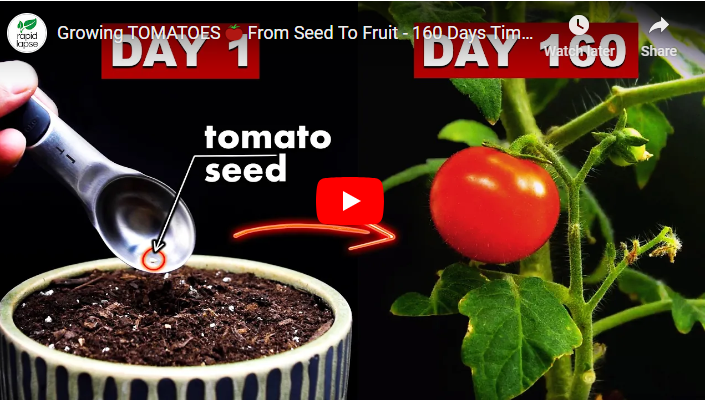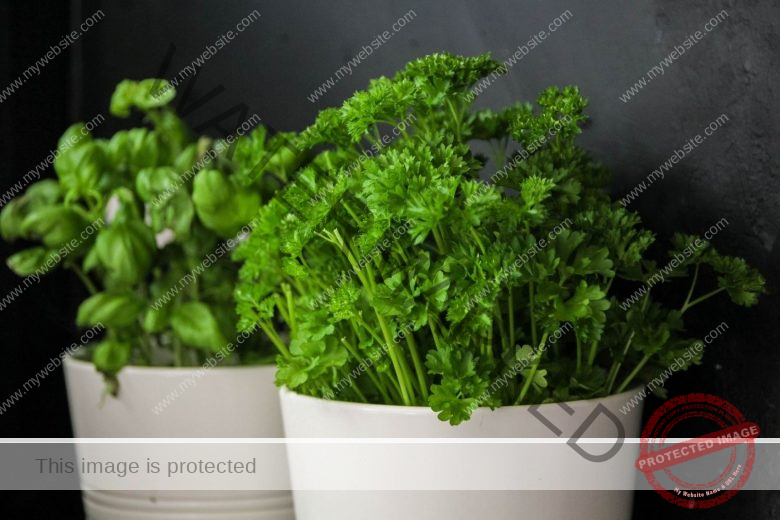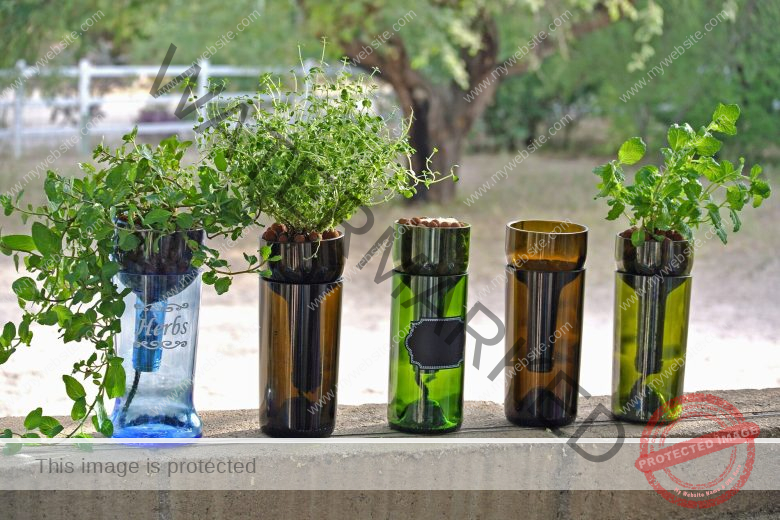Tomatoes are one of the most popular and widely cultivated fruits around the world. With their vibrant colors and delicious taste, they add a burst of flavor to numerous dishes.
In a tomato plant’s life cycle, the time lapse from the emergence of a flower to the development of a mature fruit typically ranges from 30 to 45 days, depending on the variety and growing conditions. During this period, the flower undergoes pollination, fertilization, and gradual fruit growth, transforming into a ripe tomato ready for harvest.
Understanding the growth process of tomatoes, from flower to fruit, can be an exciting journey for gardeners. In this article, we will explore the mesmerizing time-lapse transformation of a tomato flower into a fully ripe fruit. So, grab your gardening gloves and let’s delve into the world of tomatoes.
Tomatoes belong to the Solanaceae family and are native to South America. These warm-season plants thrive in areas with full sun and well-drained soil. Witnessing the transformation of a tiny flower bud into a plump and juicy fruit is a true marvel of nature. Let’s uncover the stages of tomato growth, from the initial flower formation to the luscious red tomatoes we adore.
[Gardener’s Manual] Tomato Flower to Fruit Time Lapse
To fully appreciate the growth process, it’s essential to understand the anatomy of a tomato plant. The plant consists of roots, stems, leaves, flowers, and fruits. The roots provide stability and absorb nutrients from the soil, while the stem supports the plant’s structure.
Leaves capture sunlight and enable photosynthesis, providing energy for growth. Flowers are responsible for reproduction, eventually leading to the formation of fruits.
The Life Cycle of a Tomato Plant
A tomato plant undergoes several stages in its life cycle. It starts as a seed, germinates, develops into a seedling, and finally grows into a mature plant capable of flowering and fruiting. Understanding this life cycle is crucial for gardeners to ensure proper care and optimal conditions for their tomato plants.
The Blooming Stage: Tomato Flowering
When the tomato plant reaches maturity, it starts producing flowers. The flowers emerge from the leaf axils, typically in clusters. Each flower consists of male stamens and a female pistil. The stamens produce pollen, while the pistil contains the ovary, which will later develop into a fruit.
Pollination: Nature’s Precious Gift
Pollination is a crucial step in the reproduction of tomato plants. It involves the transfer of pollen from the male stamens to the female pistil. This can occur through self-pollination, aided by wind or vibration, or with the help of pollinators like bees and other insects. Successful pollination results in the fertilization of the ovary and the formation of a tiny green tomato.
Fruit Formation: Green Tomatoes
After successful pollination, the tomato plant begins its fruit formation process. The tiny green tomato starts to grow and develop, drawing nutrients from the plant. It gradually enlarges and takes shape, gaining size and weight. During this stage, it is essential to provide proper care, including adequate water, sunlight, and nutrients, to ensure optimal fruit development.
Ripening Process: From Green to Red
As the green tomato continues to mature, it undergoes a remarkable transformation. The fruit changes its color from green to various shades of yellow, orange, or red, depending on the tomato variety. This ripening process is triggered by the release of a natural plant hormone called ethylene. As the tomato ripens, it becomes softer, sweeter, and more flavorful.
Harvesting Time: Picking the Perfect Tomato
Knowing the right time to harvest your tomatoes is crucial to enjoy their optimal taste and texture. Harvesting too early may result in underripe and flavorless fruits, while waiting too long may lead to overripe and mushy tomatoes.
Look for signs of firmness, vibrant color, and a slight give when gently squeezed to determine the perfect time for harvesting.
Factors Affecting Tomato Growth
Several factors can influence the growth and development of tomato plants. These include environmental conditions like temperature, humidity, and sunlight, as well as soil quality, proper watering, fertilization, and pest control. Understanding these factors helps gardeners create the ideal conditions for their tomato plants to thrive.
Common Tomato Growing Mistakes
Even experienced gardeners can make mistakes when cultivating tomatoes. From improper planting techniques to inadequate pruning and over-fertilization, various errors can hinder plant growth and reduce fruit yield. By learning from these common mistakes, gardeners can avoid pitfalls and maximize their tomato harvest.
Tomato Varieties: Exploring Different Types
Tomatoes come in a wide range of varieties, each with its unique characteristics, flavors, and uses. From classic beefsteak tomatoes to cherry tomatoes, heirlooms, and hybrids, the options are plentiful.
Exploring different tomato varieties allows gardeners to experiment with flavors, sizes, and colors, adding diversity to their garden and culinary creations.
Tomato Plant Care Tips
Caring for tomato plants involves a combination of proper watering, pruning, fertilizing, and pest control. Providing support with stakes or cages helps maintain plant stability and prevents fruit rot. Regular inspection for pests and diseases is essential to catch and treat any issues early. Implementing these care tips ensures healthy plants and bountiful harvests.
Troubleshooting: Dealing with Tomato Problems
Tomatoes are susceptible to various pests, diseases, and environmental stressors. Identifying and addressing these issues promptly is crucial to protect the plants and ensure a successful harvest. From tomato hornworms and aphids to blight and blossom-end rot, understanding common tomato problems empowers gardeners to take appropriate preventive measures and implement effective remedies.
Creative Uses of Tomatoes
Tomatoes are not only versatile in the kitchen but also have creative uses beyond traditional dishes. From homemade tomato sauces, salsas, and soups to tomato-based skincare products, these fruits offer numerous possibilities. Exploring the various culinary and non-culinary applications of tomatoes adds a touch of creativity and ingenuity to your tomato journey.
How Long Does It Take for Tomato Flowers to Turn Into Fruits?
Average Time for Cherry Tomatoes to Flower to Fruit
Cherry tomatoes are known for their smaller size and often have a shorter time from flower to fruit compared to larger tomato varieties. On average, it takes approximately 45 to 60 days for cherry tomatoes to develop from the flowering stage to fully ripe fruits. However, it’s important to note that this timeline can vary depending on the factors mentioned earlier.
Other Tomato Varieties and Their Flower to Fruit Time
While cherry tomatoes typically have a shorter time to flower to fruit transition, other tomato varieties may take longer. Determinate varieties, which have a predetermined growth and fruiting period, often take around 60 to 80 days from flower to fruit.
Indeterminate varieties, which continue to grow and produce fruits throughout the growing season, can take longer, ranging from 70 to 90 days or more.
It’s essential to consult the specific seed packet or variety information for accurate estimations of flower to fruit time for different tomato varieties, as they can vary significantly.
Tips for Enhancing Tomato Flower to Fruit Transition
To optimize the flower to fruit transition and shorten the time it takes for tomatoes to develop, consider the following tips:
Provide Adequate Sunlight: Tomatoes thrive in full sun, so ensure they receive at least 6 to 8 hours of direct sunlight each day for optimal growth and fruit production.
Maintain Consistent Watering: Tomatoes require consistent moisture, so water them regularly and deeply, especially during dry periods. Avoid overwatering, as it can lead to root rot and other issues.
Fertilize Properly: Use a balanced fertilizer formulated for tomatoes to provide essential nutrients for healthy plant growth. Follow the recommended application rates and timing for best results.
Prune and Support: Proper pruning and providing support for tomato plants help maintain good airflow, reduce disease risk, and promote efficient fruiting. Remove suckers (additional growth) and use stakes, cages, or trellises to support the plants.
Monitor for Pests and Diseases: Regularly inspect your tomato plants for any signs of pests or diseases. Early detection and appropriate treatment can prevent potential damage and ensure healthy fruit development.
How long does it take for a tomato flower to turn into a fruit?
The time it takes for a tomato flower to develop into a fruit varies depending on various factors, but on average, it can take approximately 45 to 60 days for cherry tomatoes and around 60 to 80 days for other tomato varieties.
What are some common tomato growing mistakes to avoid?
Some common tomato growing mistakes to avoid include improper planting techniques, overwatering or underwatering, inadequate pruning, using poor-quality soil, neglecting pest and disease control, and over-fertilizing. Being aware of these mistakes and taking proactive measures can help ensure successful tomato cultivation.
What are the different types of tomato varieties?
There are numerous types of tomato varieties available, each with its unique characteristics. Some popular tomato varieties include beefsteak tomatoes, cherry tomatoes, Roma tomatoes, heirloom tomatoes, and hybrid varieties. Each type varies in size, shape, flavor, and suitability for different culinary uses.
How can I protect my tomato plants from pests and diseases?
To protect tomato plants from pests and diseases, you can implement several measures. These include maintaining good garden hygiene, practicing crop rotation, using organic or chemical pesticides when necessary, regularly inspecting plants for signs of pests or diseases, and promptly treating any issues that arise.
Providing proper air circulation, spacing plants adequately, and removing any infected or damaged plant material can also help prevent pest and disease problems.
Can tomatoes be grown in containers?
Yes, tomatoes can be successfully grown in containers, making them a popular choice for gardeners with limited space. Choose a large container with good drainage, use a well-draining potting mix, provide support for the plants, and ensure they receive adequate sunlight, water, and nutrients. Container-grown tomatoes may require more frequent watering and feeding compared to those grown in the ground.
Conclusion
The journey of a tomato flower transforming into a ripe, succulent fruit is a captivating process for gardeners and tomato enthusiasts alike. From understanding the anatomy and life cycle of tomato plants to implementing proper care, harvesting, and troubleshooting techniques, cultivating tomatoes can be a rewarding experience. So, embrace the wonder of nature, get your hands dirty, and enjoy the delights of growing your own flavorful tomatoes.





